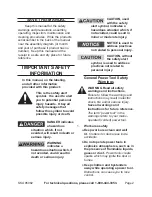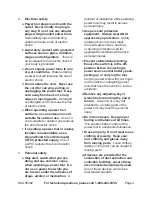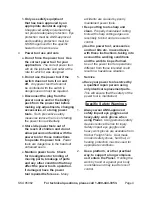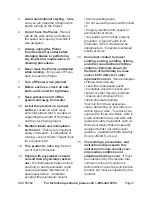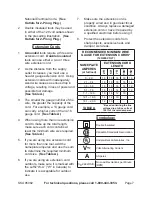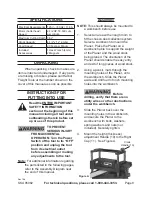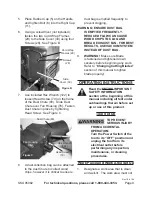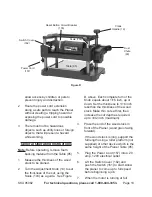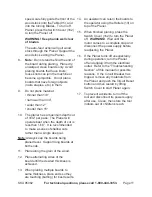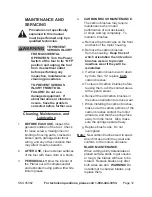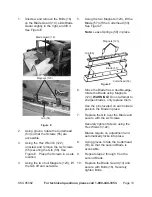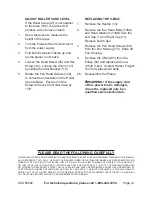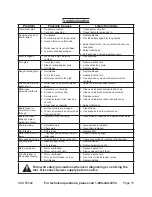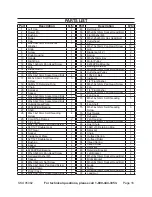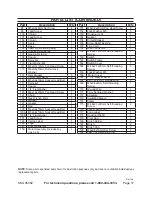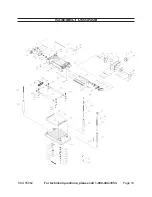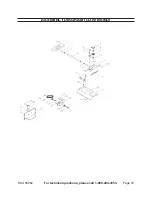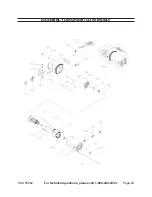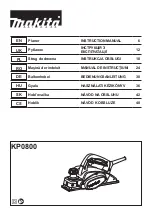
SKU 95082
For technical questions, please call 1-800-444-3353.
Page 5
Avoid unintentional starting.
3.
Make
sure you are prepared to begin work
before turning on the Planer.
do not force the Planer.
4.
This tool
will do the work better and safer at
the speed and capacity for which it
was designed.
Always unplug the Planer
5.
from its electrical outlet before
changing blades or performing
any inspection, maintenance, or
cleaning procedures.
Never leave the Planer unattended
6.
while running.
Turn power off if you
have to leave the Planer.
turn off Planer when jammed.
7.
Before each use, check all nuts,
8.
bolts, and screws for tightness.
Keep extension cord off the
9.
ground and away from water
.
install this product on a proper
10.
surface
.
Locate on a flat, level,
and solid surface that is capable of
supporting the weight of the Planer
and the stock being planed.
maintain labels and nameplates
11.
on the tool.
These carry important
safety information. If unreadable or
missing, contact Harbor Freight Tools
for a replacement.
this product is not a toy.
12.
Keep it
out of reach of children.
People with pacemakers should
13.
consult their physician(s) before
use.
Electromagnetic fields in close
proximity to heart pacemaker could
cause pacemaker interference or
pacemaker failure. In addition,
people with pacemakers should:
• Avoid operating alone.
• Do not use with power switch locked
on.
• Properly maintain and inspect to
avoid electrical shock.
• Any power cord must be properly
grounded. Ground Fault Circuit
Interrupter (
GFCI
) should also be
implemented – it prevents sustained
electrical shock.
Some dust created by power
14.
sanding, sawing, grinding, drilling,
and other construction activities,
contains chemicals known [to
the State of california] to cause
cancer, birth defects or other
reproductive harm.
Some examples
of these chemicals are:
• Lead from lead-based paints
• Crystalline silica from bricks and
cement or other masonry products
• Arsenic and chromium from
chemically treated lumber
Your risk from these exposures
varies, depending on how often you
do this type of work. To reduce your
exposure to these chemicals: work in
a well ventilated area, and work with
approved safety equipment, such as
those dust masks that are specially
designed to filter out microscopic
particles. (California Health & Safety
Code § 25249.5, et seq.)
the warnings, precautions, and
15.
instructions discussed in this
instruction manual cannot cover
all possible conditions and
situations that may occur.
It must
be understood by the operator that
common sense and caution are
factors which cannot be built into this
product, but must be supplied by the
operator.


